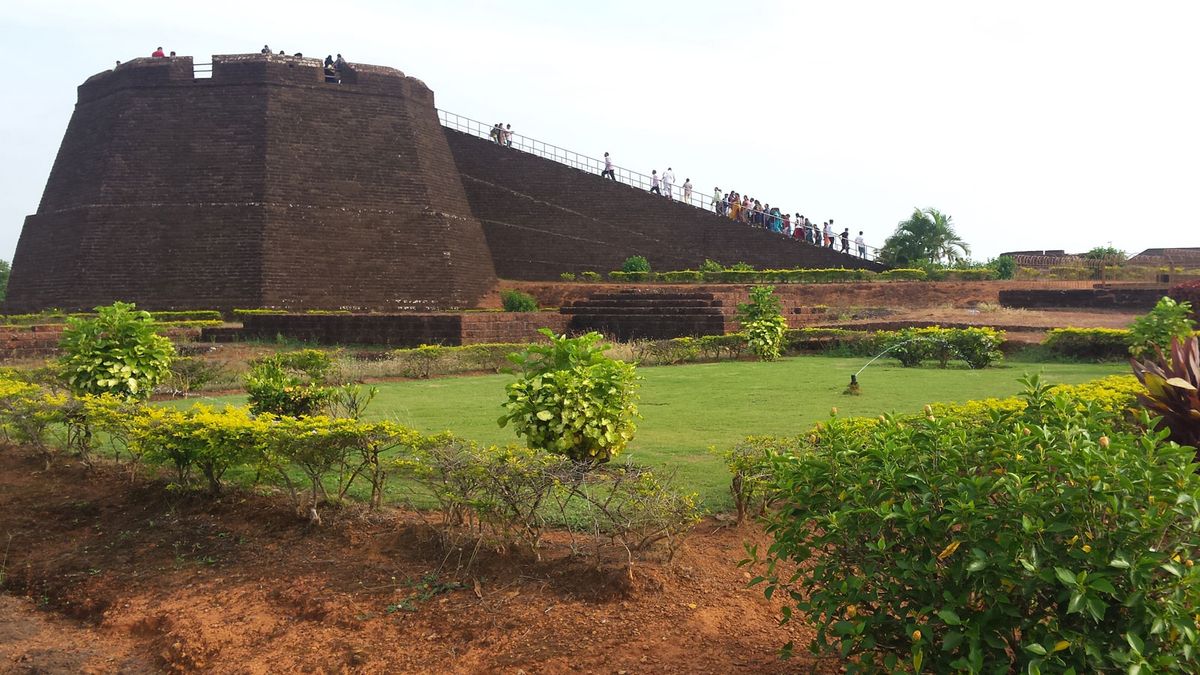God's own country, Kerala is a divine state full of natural and cultural beauty. Situated in the southernmost region of India, Kerala does not only offer scenic sea and mountain views, but also an ecological diversity that keeps attracting everyone in almost all seasons. Being in the tropical zone, Kerala is an evergreen tourist spot. The state also has a rich culture and traditions that are a treat to witness and explore when you're travelling here.
Bekal Fort is one such destination for those who love to see a perfect blend of history and natural beauty. Bekal, Kerala is a fort with green valleys on one side and the Arabian sea on the other. Bekal fort is now under the management of the Archaeological Survey of India to preserve Kerala's heritage and keep it as strong a structure as ever for visitors.
Bekal Fort is the largest fort in Kerala, with an area of about 40 acres. It is close to Bekal Beach, which you can explore with a long walk, starting from the Bekal fort location.
The history of Bekal Fort

Bekal fort's history, like most Indian forts, is marked by a series of remarkable events. According to popular evidence, King Shivappa Nayak completed the construction of the Bekal fort in 1650 AD. Bekal fort was built for defence purposes by the Nayak lineage to protect their economy. But many archaeologists and local legends suggest that the fort existed during the Nayaks' predecessors Kolathiris or Chirakkal royal family as well, which was later captured by Shivappa Nayak.
The ownership of Bekal fort was a topic of debate for quite a long time when Nayaks were struggling to retain the fort against the powers of Kolathiris. The dispute ended when the Mysore kingdom expanded under the rule of Hyder Ali, and he captured the fort.
Further in the timeline of the Mysore kingdom, there is strong archaeological evidence for the presence and strategic use of Bekal fort by Mysore Kings such as Tipu Sultan. Tipu Sultan used the Bekal fort for his military expansion expeditions and administration. But in the year 1799, after his death, Bekal fort fell into the hands of the British East India Company, who used the fort prominently for administration purposes.
Present day Bekal Fort

After independence, the Kasargod district officially became a part of Kerala, keeping the fort under the administration of the Kerala state government. Later, in the year 1992, the fort was categorised as a special tourism area as a part of the state's tourism promotion.
Bekal fort has become a popular destination, because of the diverse scenic experiences in the Bekal area. From movie shootings to local visits, Bekal fort gets frequent visitors from both Kerala and Karnataka states (because of the Bekal Fort's proximity to major Karnataka cities).
You will see various preservation methods implemented on the site without taking away its historical significance and beauty. Of course, there are several new age tourist attraction instalments like gardens and pathways and also modern safety measures that you usually see on Indian forts.
The architecture of Bekal Fort

Given that Bekal fort has always served as a military defence and administration fort, there are no traces of palaces, mansions, or residential plans on the fort. It is right beside the Arabian Sea, with an incredibly wide view. The Bekal fort houses a Hanuman temple, a mosque, and an old utility water tank. The fort is a defence marvel with a zig-zag entrance, observation tower, peepholes at different levels, underground tunnels, and much more.
Attractions at the Bekal Fort

- Underground Passages: There were seemingly a lot of underground escape tunnels leading to different directions, connected to the Bekal Fort. Two of these tunnels are still working, although they are not accessible to tourists.
- Sea Bastion: The huge rock projection on the fort offers a beautiful view of the sea.
- Anjaneya Temple: The famous Hanuman temple on the fort is believed to be as old as the fort.
- Mosque: There is a mosque constructed by Tipu Sultan just outside the Bekal Fort.
- Observation Tower: The tower on the Bekal fort is 30 feet in height, offering a spectacular 360-degree view of the surroundings.
How to reach Bekal Fort

As we already know, Bekal Fort, Kerala is situated close to major destinations like Mangalore, Kasargod, etc. From Kasargod or Kanhagad, you get frequent buses and taxis to the fort. The International Airport of Mangalore is just 71 km away from Bekal Fort.
General information about Bekal Fort
Location: Near Bekal Fort Railway Station
Timings: 8 am to 6 pm
Entry fee: Rs 20 per person
Best time to visit: October to March
Time required: 2-3 hours
Nearby attractions: Bekal Beach, Trikkannad Tryambakeshwara Temple, Kottappara Monsoon Waterfalls, Chandragiri Fort

Disclaimer: The details mentioned throughout this blog are sourced from publicly accessible platforms. At Zeezest, we intend to share factual and verified information. Should there be any inconsistencies or variances in the information provided, please understand that these are entirely unintentional and not meant to mislead.




